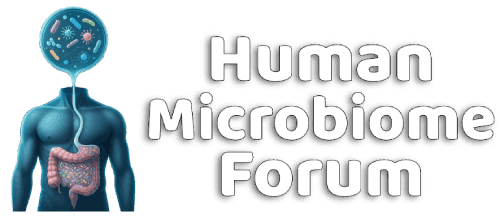Michael Harrop
Well-known member
https://www.tandfonline.com/doi/full/10.1080/19490976.2025.2508950
UMN GMP stool bank provides insights from their and other companies' experiences. UMN appears to have some of the worst donors that exist anywhere.
Interestingly, they mention relevant info about the donor recruitment, payment, etc. of pharmaceutical companies that recruit stool donors, but no mention of Human Microbes.
I think if UMN was genuinely interested in finding and providing a cure, they'd be working alongside me and helping any way they can. Instead, like virtually everyone else, they completely ignore Human Microbes. The way the research industrial complex ignores Human Microbes is extremely suspicious.
One clue is that UMN is not a benevolent 3rd party trying to find a cure. They're a company partnered with the ASU team/company:
Both ASU and UMN seem to have chosen money over a cure. And they've decided that manufacturing a "drug" is their best bet towards that end. This helps to explain how they've been able to raise so much money, and why none of their supporters care about Human Microbes. Their investors are wealthy families who also seem to have chosen money over a cure.
They don't list this in the Disclosures section:
And they seem to imply that they are "purely academic":
Everything they do seems totally at odds with everything they say.
The donor recruitment section is interesting:
UMN GMP stool bank provides insights from their and other companies' experiences. UMN appears to have some of the worst donors that exist anywhere.
Interestingly, they mention relevant info about the donor recruitment, payment, etc. of pharmaceutical companies that recruit stool donors, but no mention of Human Microbes.
I think if UMN was genuinely interested in finding and providing a cure, they'd be working alongside me and helping any way they can. Instead, like virtually everyone else, they completely ignore Human Microbes. The way the research industrial complex ignores Human Microbes is extremely suspicious.
One clue is that UMN is not a benevolent 3rd party trying to find a cure. They're a company partnered with the ASU team/company:
Our initial focus is on developing Microbiota Transplant Therapy (MTT) for autism and related conditions.
We are a unique company funded by 70+ autism families to help everyone with autism. Please consider joining our GBAT family of investors to help us achieve FDA approval of MTT for autism.
GBAT investors need to be accredited investors due to federal requirements. The federal definition of an accredited investor is an income of $200k/yr (or $300k/yr with spouse) or assets of $1 million (can include retirement funds).
Alexander Khoruts, MD. Chief Medical Officer
Both ASU and UMN seem to have chosen money over a cure. And they've decided that manufacturing a "drug" is their best bet towards that end. This helps to explain how they've been able to raise so much money, and why none of their supporters care about Human Microbes. Their investors are wealthy families who also seem to have chosen money over a cure.
They don't list this in the Disclosures section:
No potential conflict of interest was reported by the author(s).
And they seem to imply that they are "purely academic":
They should be overseen by Institutional Review Boards, as is currently done in strictly academic programs.
Everything they do seems totally at odds with everything they say.
The donor recruitment section is interesting:
An early breakthrough was achieved after the Program Director gave a series of campus lectures about FMT, which were helpful especially as these took place at a time of little public awareness about the gut microbiome.Citation28
Subsequently, a formal student group (Microbiota in Health and Medicine) was organized, which became involved in donor recruitment activities through direct engagement with student peers. Ultimately, as the Program matured, active stool donors became the most helpful recruiters through their own social networks (). Overall, the majority of our donors are either not affiliated with the University or work as staff or graduate students ().
recent recruitment efforts by Ferring Pharmaceuticals. Its billboards and recruitment flyers blanketed entire residential neighborhoods of a large metropolitan area, sports stadiums, and the Twin Cities campus of the University of Minnesota.
I believe this is a sign of poor donor quality. Good donors don't fail tests.The majority of the donors (65%) had at least one positive stool test during their participation in the program. The remaining 35% were infrequent donors, averaging 24 donations over their history of their participation.
- Format correct?
- Yes
Last edited:
